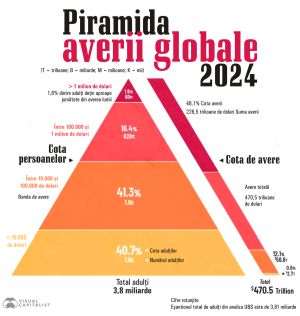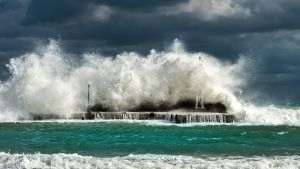Money for the green transition allocated through the Recovery and Resilience Mechanism (RMR) has been misappropriated by EU member states because some measures, "green" on paper, are not so "green" in reality, while some projects so-called "greens" have no direct connection to the green transition, according to the audit report published yesterday by the European Court of Auditors (ECA), after analyzing the PNRRs of Greece, Slovakia, Portugal and Croatia.
European auditors show that in practice, on closer examination, it turned out that some so-called "green" projects had no direct connection with the green transition.
"For example, a measure to improve water management was assigned a climate coefficient of 40%. But the funds were actually spent on government IT solutions aimed at digitizing the water supply system. So the more appropriate coefficient in this case would have been 0%", the quoted report states.
Moreover, some measures, "green" on paper, were actually not so "green" in reality.
The ECA report states: "For example, the financing of a project to build a pumped storage hydro plant has troubled the waters - literally and figuratively. Why? Because the project's impact on the environment was not evaluated beforehand. To meet climate spending targets, countries present estimated costs in their plans, which are verified in advance but not after their execution. In other words, the actual costs of the measures financed from the MRR can be significantly different from the estimated costs. Thus, there is no full accounting of funds actually spent on climate action."
Regarding the above situation, Joëlle Elvinger, ECA responsible for this report stated: "MRR represents a considerable investment at EU level. If well implemented, it should greatly accelerate the achievement of its ambitious climate goals. But, at present, the potential of the mechanism in this sense is undermined due to the high level of approximation in the related plans and due to discrepancies between forecasts and reality, thus not being able to know the true amount that directly supports the green transition".
Asked by the newspaper BURSA if, under these conditions, it can be said that the member states diverted the funds allocated to the green transition to other projects, Joëlle Elvinger said: "We cannot talk about diversion as long as the European Commission considers, based on the evaluations made on the basis of its own methodology, that the money ended up in green projects, according to the initially established percentage".
Following the response of the head of the audit team within the ECA for the green transition, we wanted to know what then remains with the expressions in the report that some measures, "green" on paper, are not so "green" in reality and that some projects so - so-called "greens" have no direct connection with the green transition. Joëlle Elvinger refused to answer this question.
• Implementation of long-delayed green transition projects
The cited document shows that in February 2024, member states had received euro103 billion in grants and euro54 billion in loans (in addition to the 13% pre-financing, i.e. around euro68 billion). Of the total payments made to date, 17% (27.2 billion euros) are related to the "green transition" pillar.
The ECA auditors state: "Given that climate-relevant measures alone should contribute 42.5% of the total amount allocated under the MRR and that the green transition should include 34 additional environmental measures that are not taken into account in the climate expenditure tracking exercise, this amount remains quite low. There is a risk that the late implementation of climate-related projects and slow uptake will impact the realization of the climate action contribution to the total value of euro275 billion. There are delays in the project schedule, for example due to delays in public procurement procedures or in obtaining operating permits. At the same time, the Court found, in course its activity, that the national authorities underestimated the time needed to implement the measures. For other measures, demand is lower than expected, which affects the absorption of funds. The actual contribution to the climate actions of the recovery and resilience plans will be lower than the one originally calculated if the related measures are not completed within the deadline stipulated by the MRR or if they are only partially completed by the deadline".
• Overestimation of 34.5 billion euros of MRR expenses regarding the green transition
According to the European Commission, measures to support the EU's climate objectives represented, in February 2024, 42.5% of the MRR funds (i.e. 275 billion euros).
But the reality is different: ECA auditors warn that these contributions may have been overestimated by at least 34.5 billion euros. And that's not all. They also found deficiencies in the milestones and targets defined for climate action, but also in the reporting of actual spending, and also highlighted the alleged greenness of certain projects.
One of the most important purposes of the MRR is to contribute to Europe's climate goals and to the green transition in EU Member States. Unlike other previous types of EU spending, MRR money is paid out after milestones and targets have been met, and not as reimbursement for actual spending. Among other shortcomings, the auditors found that this funding model and the relatively short time frame for the implementation of the MRR call into question the actual contribution to climate action of all the funds planned for this purpose.
According to the ECA report, our country proposed through the PNRR to make investments of 12.6 billion euros that would contribute to the green transition.
Note:
The Recovery and Resilience Mechanism (RMR) is a specific financing package worth 700 billion euros, made available by the EU following the COVID-19 pandemic. It consists of a combination of loans and grants. The Member States receiving the respective funds establish, within the framework of national recovery and resilience plans, the milestones they intend to achieve and the estimated costs. At the planning stage, at least 37% of the funds must be allocated to climate actions aimed at contributing to the 2050 target of reducing net emissions to zero in the EU. The calculation of this 37% contribution is done according to a climate-related expenditure tracking methodology. A methodology for tracking environmental objectives is also provided for in the MRR, but it is not used.



























































